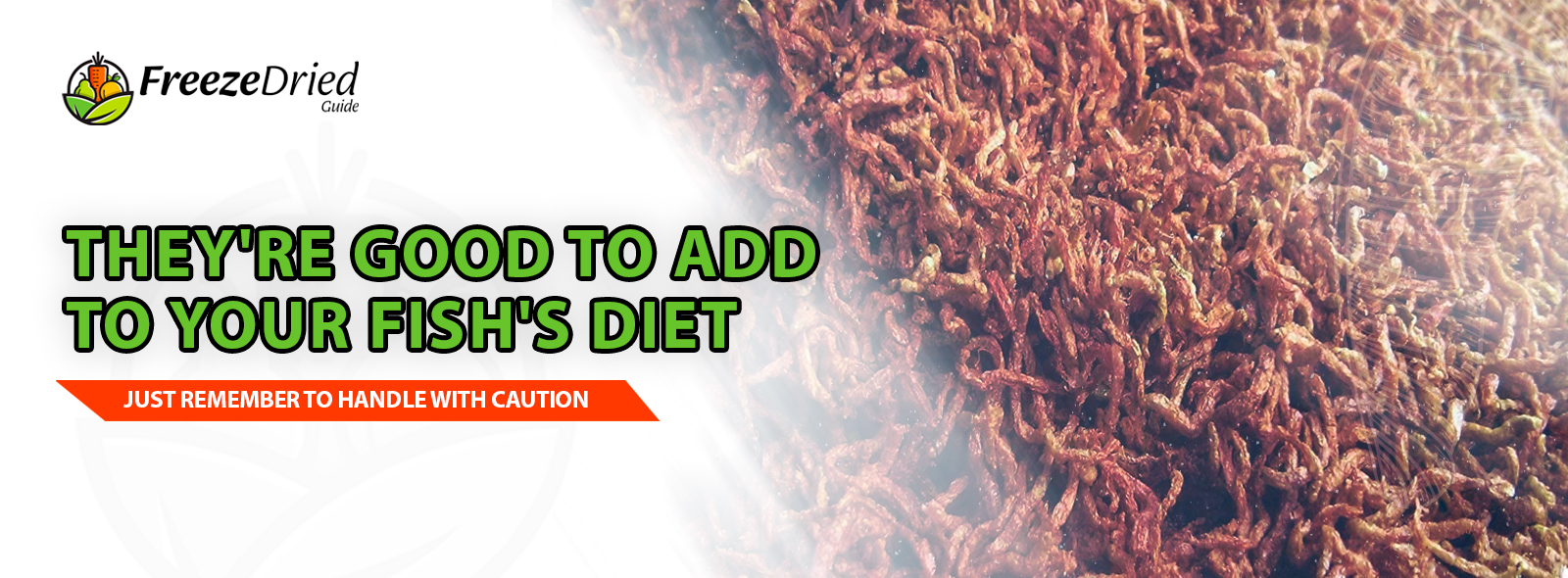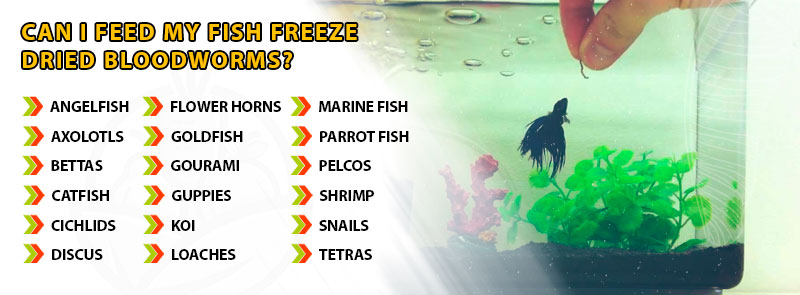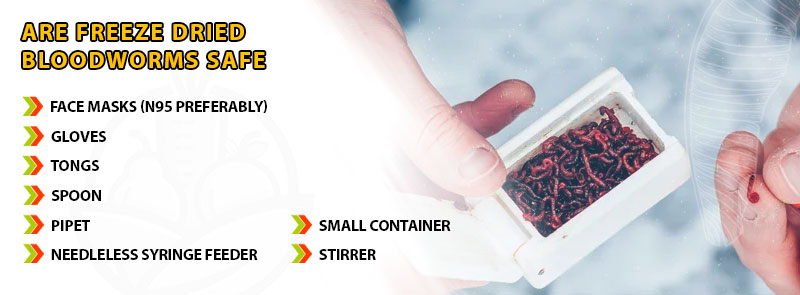Better Websites to own 2025
Jun 11, 2025

Taking care of fish is not as simple as it seems. To maintain their vibrant color and keep them healthy, your aquatic companion needs a variety of food. One of them is the intimidating yet claimed-to-be nutritious bloodworms.
Bloodworms are larvae that hatched from eggs of non-biting midge flies. These worms don’t really feed in blood. They get their name because of their bright, vivid red color. You can find them in soft soil, usually around fresh water bodies.
Their bright red color is due to their high hemoglobin content. Their body is actually pale pink in color. But because of their thin outer covering, the hemoglobin shines through. Because of this, they can survive in waters with poor oxygen levels.
Bloodworms will feed on anything that can pass through their mouth. Although their adult forms don’t bite, they do bite humans. When they bite, they release a venom that stings similar to being stung by a bee or a wasp.
Freeze-dried bloodworms are different compared to fresh and frozen ones. Fresh larvae will have been good if they don’t have a 12-day larvae cycle. This means you must feed them to your fish within 2-3 days of purchasing. As for frozen bloodworms, they can put the fish into shock. So you must put up with the mess of thawing the cubes before feeding them to your fish.
On the other hand, freeze-dried bloodworms are larvae preserved through a sublimation process. A pressurized chamber removes the moisture in the form of ice from the larvae. With the proper pressure and temperature change, ice transforms to vapor without passing the liquid stage. What’s left is an airy, dry, crunchy supplement to your aquatic friend’s diet.
These carnivorous larvae come in different sizes but can grow as long as 14 inches. Bloodworms are also popular fish food for aquatic pets like:

Although freeze-dried bloodworms are okay for feeding fish, you must consider the venomous component.
Freeze drying was primarily used to preserve the integrity of biological samples in World War II. There’s also a study conducted that showed weakening of biological activities in snake venom.
This means that some of the venomous components remained when the larvae were freeze-dried. There were certain incidences when handling bloodworms induced asthma. Others experienced symptoms of allergic reactions varying from mild to severe.
Incidences of allergic reactions are rare, but one should always be cautious. Remember to use safety equipment when you feed your fish or use bloodworms as bait. These can include but are not limited to:
Avoid bare skin contact as much as possible and safely store your freeze-dried bloodworms. Keep them out of reach or as far away from human contact as possible. Especially if you have a family member with a history of sensitivity or allergic reactions.
Fish food companies often instruct how to feed your fish freeze-dried bloodworms. But here’s how for those who wish to find out how to use the fish food first before buying.
You can feed your fish with freeze-dried larvae in their dry state. Wear your gloves or use tongs to sprinkle the feed on the aquarium’s surface. The freeze-dried bloodworms will rehydrate by themselves as they float on the surface.
Others don’t recommend this because they say it causes their fish to become bloated or constipated.
If your fish is a bottom feeder, rehydrating will help feed it faster.
Put a pinch or two of freeze-dried bloodworms in a small container. Add enough aquarium water to suspend the fish food. Let it soften for 10-15 minutes, then gradually pour the feed into the tank.
Some experts claim that freeze-dried bloodworms are less nutritious than frozen or fresh counterparts. So what others do is add a good measure of liquid fish vitamin to the soak before feeding.
If you want “localized” feeding, use a needless syringe feeder. Or you could use a pipet that lets the rehydrated freeze-dried bloodworms go through. These two are optional, but it helps lessen the contact with the feed as much as possible.
Regardless of your chosen feeding method, remember to clean up left-over freeze-dried bloodworms. These can cause stress to your pump and also contaminate your aquarium water.

Want to try feeding your fish with freeze-dried bloodworms? You can buy them from these brands:
This brand is one of the highest-rated ones in the market. These are excellent, high-protein treats made from real bloodworms, not mosquito larvae. One customer said it was the only thing that his bettas would eat. The freeze-dried bloodworms get the fish’s attention quickly, especially when rehydrated in the aquarium.
Guess what. They’re also good snacks for turtles, too.
You can buy Omega One freeze-dried bloodworms in Petco, but they’re also available on Amazon online.
Hikari makes sure that your freeze-dried larvae are free from parasites and bacteria. Many fish owners claim that their fish love the brand. With a shaker top, you can fully control the amount of FD larvae to give to your fish. Just remember to keep yourself protected when you have history of sensitivity. Shaking the bottle can release debris you can inhale.
San Francisco Bay gives you a good amount of freeze-dried bloodworms per bottle. A customer saw his fish going nuts each time he fed them with these. If you feed these to bettas, you might want to soften them. Some say their fish kept spitting them before eating. This is what fish do to soften the food, so they’re easier to eat.
Freeze-dried bloodworms are great supplements to your pet fish’s diet. They’re a good source of protein and are suitable to feed most fish. Some, of course, will flick their fins in offense when offered. But those who love these FD larvae go crazy. So who knows, maybe your fish will swim in happy circles when you give them these.
Do note that freeze-dried bloodworms are known to cause allergies. Make sure to wear protective gear and observe your reaction each time you feed these to your fish.
What’s your pet fish, and why do you wish to give freeze-dried bloodworms? Let us know your story in the comment section.